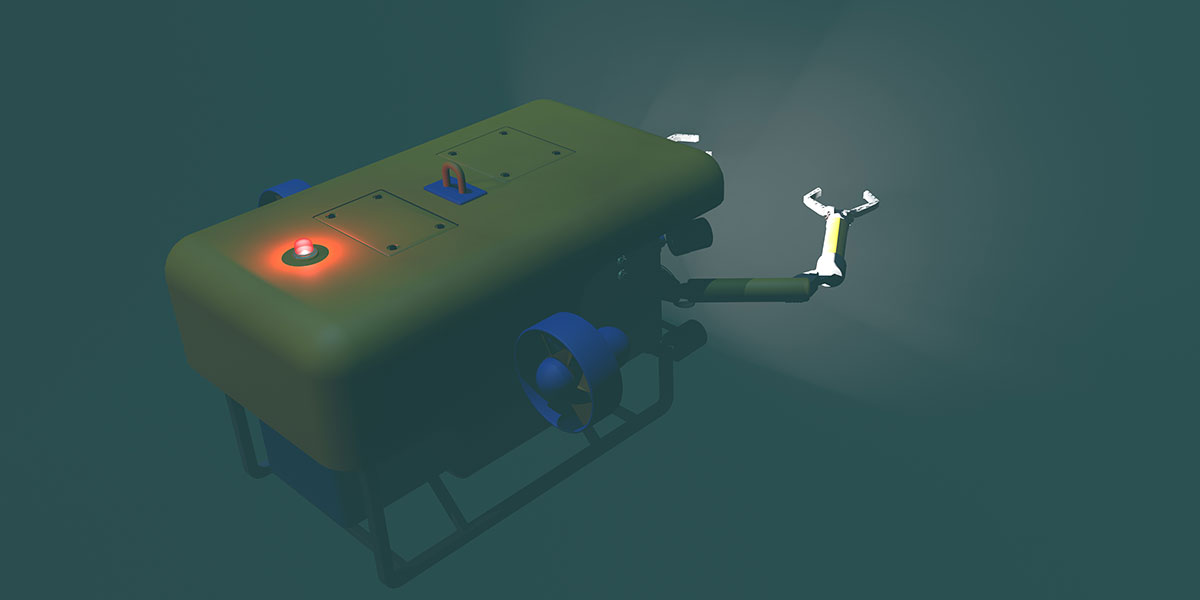
Underwater Remote Operated Vehicles: The Next Big Thing in Robotics?
By Bryan Bergeron View In Digital Edition
I’ve built and flown several quadcopters, including a fiberglass and carbon fiber unit with 4 kg of onboard lithium-ion batteries. However, because the nearest park is almost always occupied, my go-to quadcopter is a palm-sized unit that I fly indoors. In my controlled environment, I don’t have to worry about my 6 oz drone falling from the sky onto a pedestrian, dog, or automobile. However, it just isn’t as exciting as flying outside with multiple environmental factors to deal with, from trees and birds to blowing leaves.
While it’s a given that flying drones in some form is here to stay, there’s clearly an unmet need for robotics enthusiasts who want to break out of their bedrooms. Enter Underwater Remotely Operated Vehicles (UROVs) — the little brothers to the massive commercial underwater vehicles used to inspect hulls, ship wrecks, and pipe lines. In terms of commercial availability, UROVs — sometimes referred to as Robosubs — are where quadcopters were five years ago. As such, you’re not going to find a UROV hanging in a bubble pack next to the $39 quadcopters at RadioShack. Parts are relatively expensive, and you’ll likely have to fabricate a few things from scratch — all great challenges for an experimenter.
I’ve only built one UROV — a bare bones model that survived several excursions in a nearby pond. Although it might seem counterintuitive, a typical quadcopter is much simpler to design, build, and operate. Aside from locating affordable parts, the challenges in building a UROV (in order of importance) are keeping the electronics dry, power, and heat dissipation.
Starting with the affordable parts issue, I made my first underwater drone with four used 12V trolling motors that I found on eBay for about $50/motor. A 12” length of 8” diameter PVC pipe with threaded end caps served as the main chassis. This wasn’t the safest design because the props were exposed.
Another limitation is that all four motors were designed for right handed rotation. As with quadcopters, you’ll want to use both left and right handed motors. Camera selection was a no-brainer — I simply mounted my GoPro on the PVC pipe using an elastic strap to avoid drilling additional holes in the pipe.
For an example of parts designed specifically for UROV use, check out the CrustCrawler site (www.crustcrawler.com) — my go-to source for aluminum robot arms and crawlers. CrustCrawler sells 400W and 600W thrusters, with fully enclosed props, excellent mounting brackets, and waterproof connectors.
They also sell transparent waterproof enclosures that can hold lights, a camera, and an Arduino or other controller. At nearly $1K for a 600W thruster, however, these top-end parts are clearly best suited for a robotics club with multiple members sharing the cost.
The challenge of keeping critical components dry is best met by using marine connectors designed for this purpose, as well as using grease on the rubber seals leading to and from the main electronics housing. Obviously, you’ll have to use motors designed for full immersion.
Power is in some ways less of an issue than with quadcopters. Instead of dealing with lithium-ion batteries and chargers, you’ll likely use one or two car batteries or an AC powered supply connected to the UROV via an umbilical cord. The cord is a bother in that it limits both maneuverability and maximum range. However, if you have access to a 110 VAC operated power supply, excursion time is virtually unlimited — even with high-drain flood lights.
Heat dissipation and thermal failure can be a problem on extended excursions if you stuff all of the control circuitry in a small airtight chamber with no thermal sink to the water. One option is to use a metal chassis that is at least partially exposed to the water. Another is to use an airtight chamber with ample free space surrounding the heat-generating components.
Of course, these are just highlights of the current state of UROVs. For more information, check out the Marine Advanced Technology Education (MATE) website for information on international UROV competitions held every summer at the NASA Johnston Space Center’s Neutral Buoyancy Lab. With time, prices will drop, parts will become more plentiful, and the Web will be full of videos of underwater sea life and perhaps even battling UROVs. SV
Article Comments